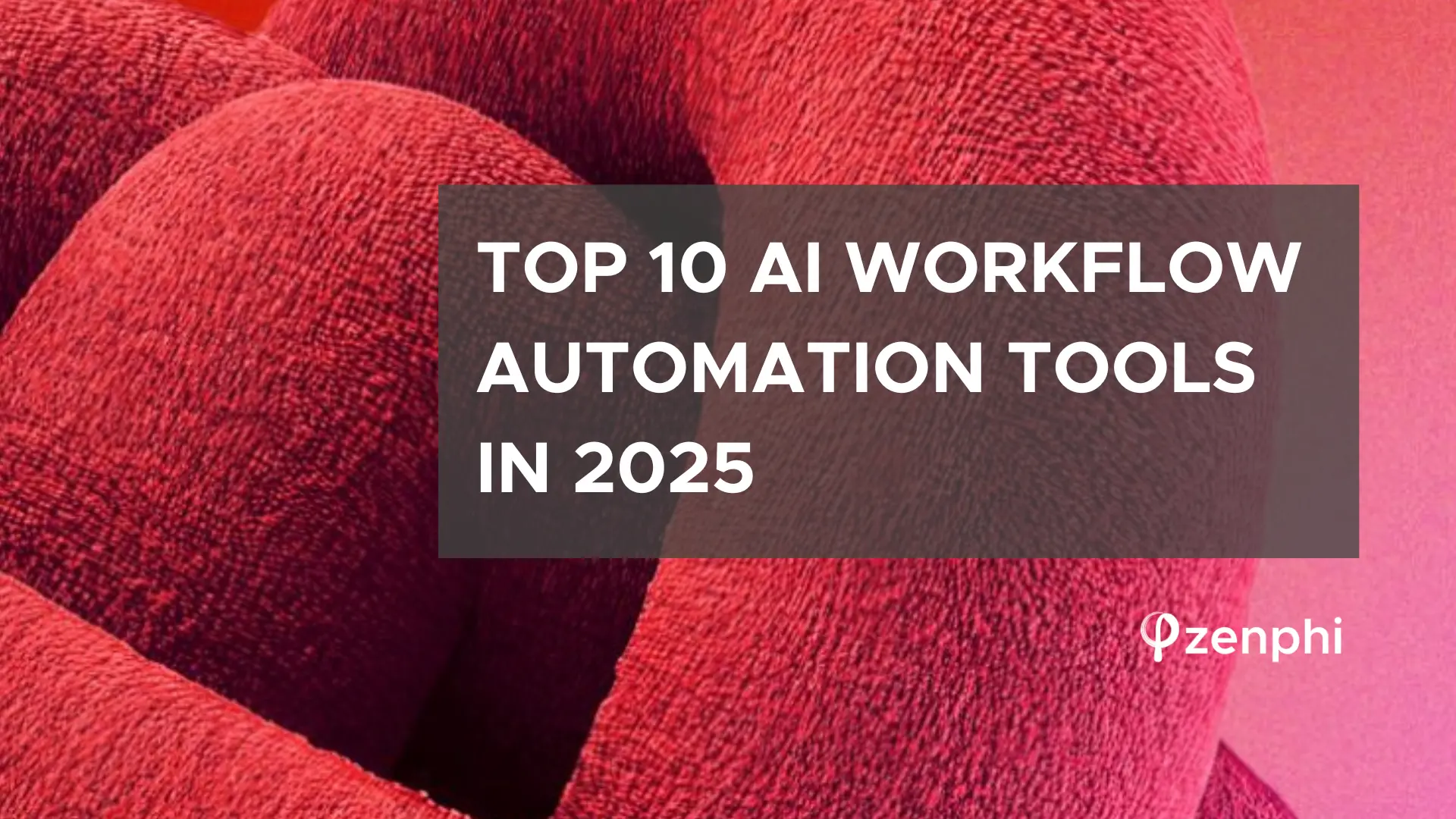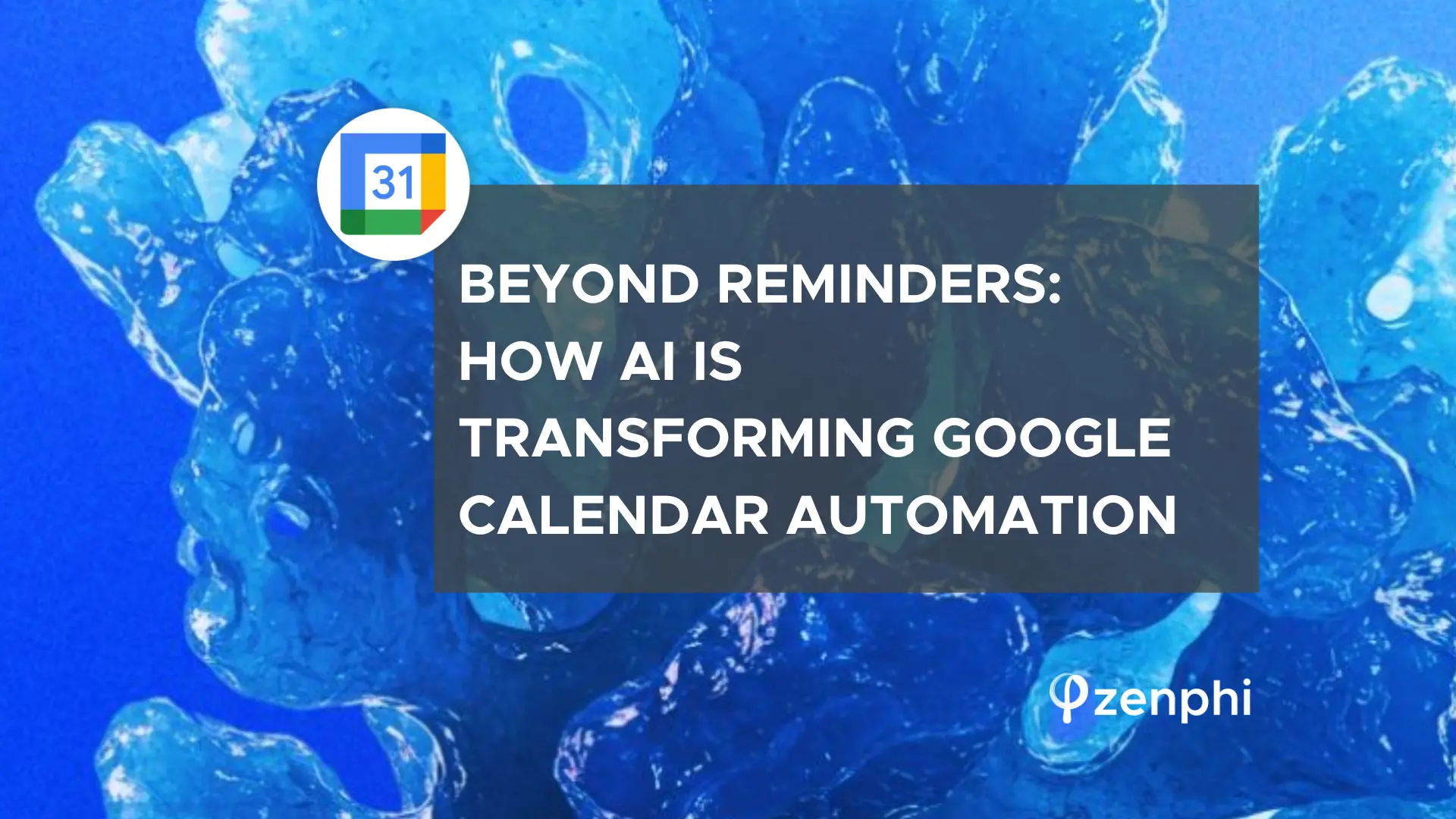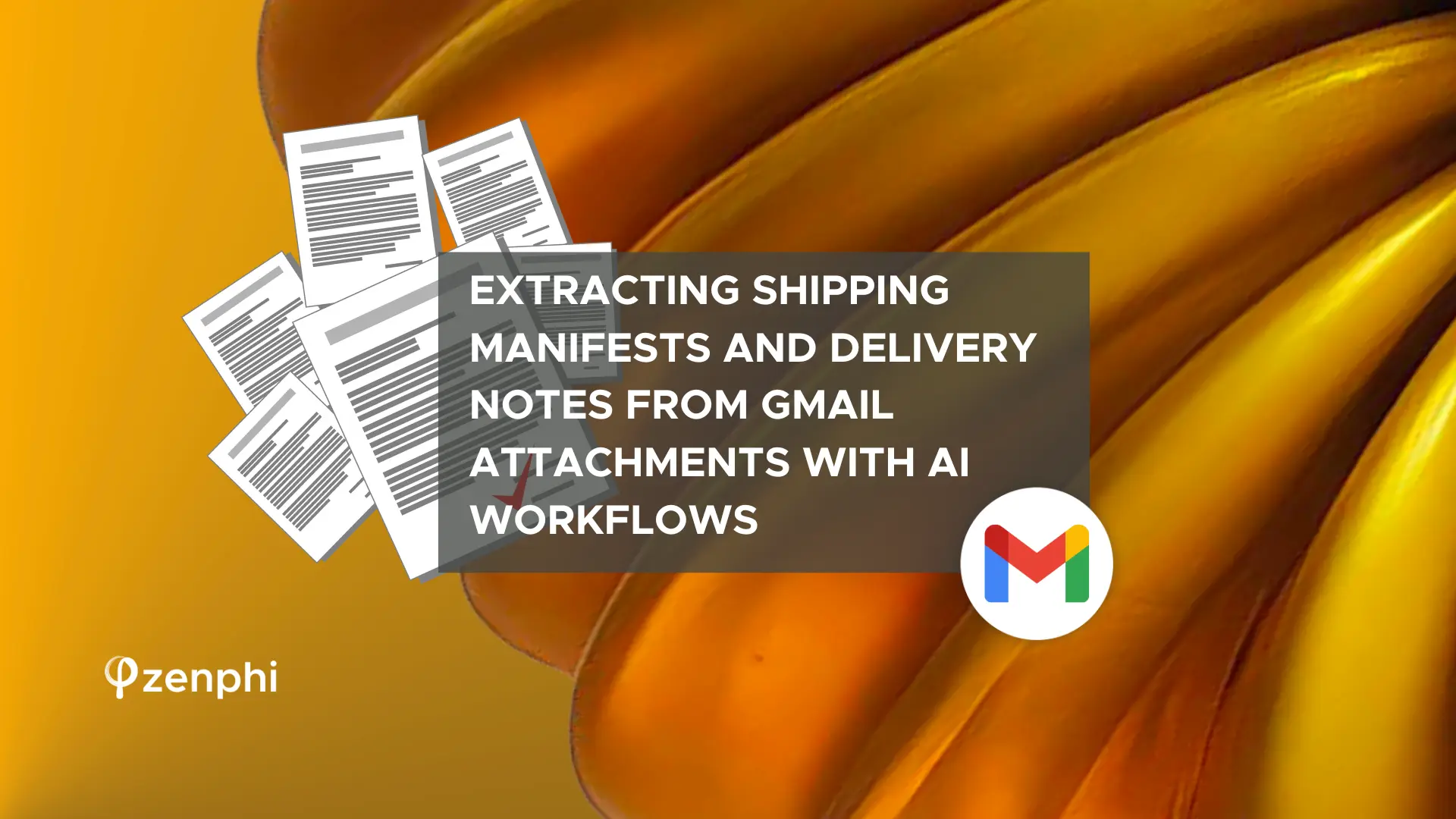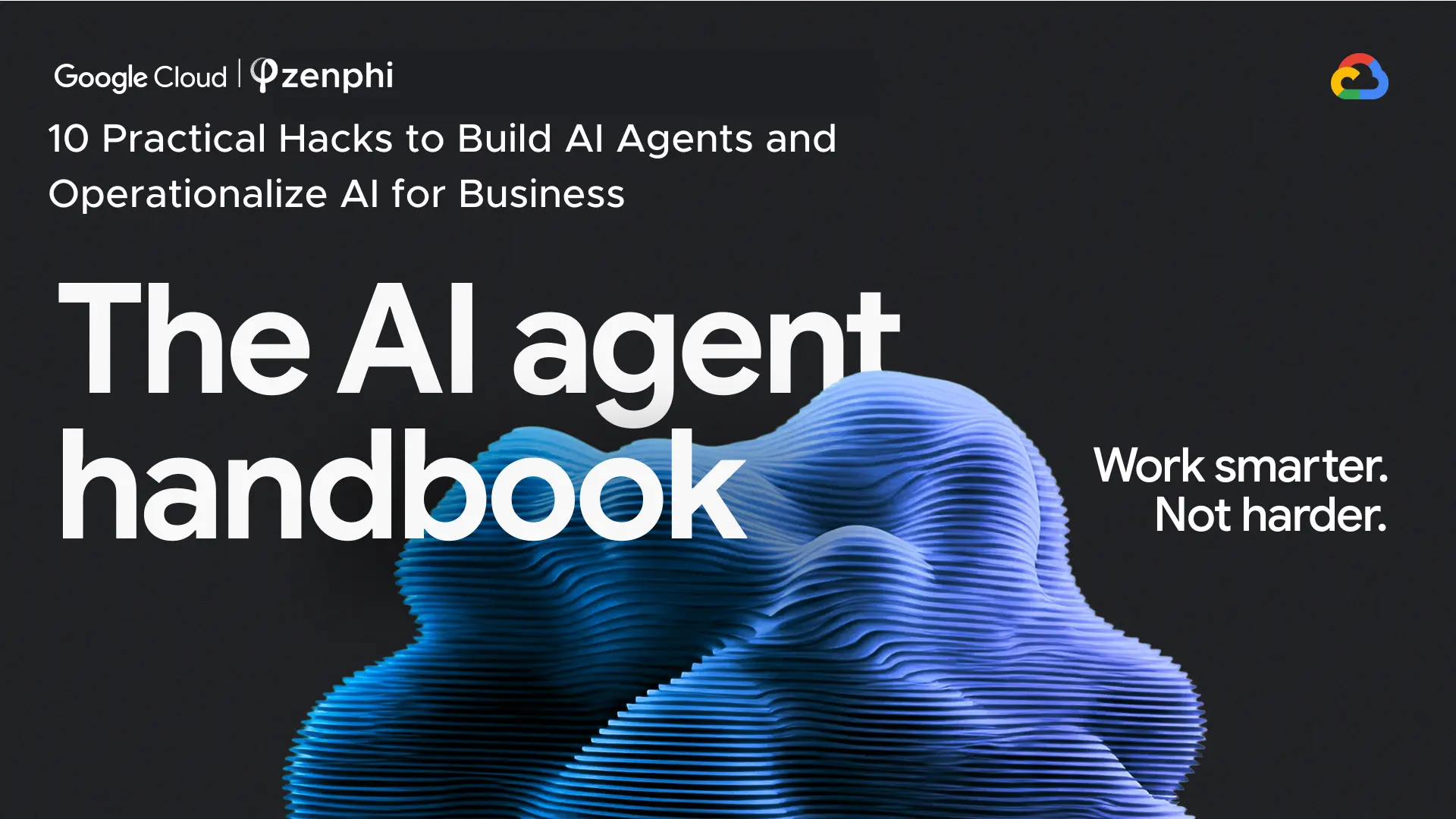Table of Contents
AI workflow automation has become one of the most impactful trends of 2025 (read more on AI workflow automation trends this year). As businesses face pressure to scale faster, cut costs, and adapt to new compliance requirements, AI-driven automation is no longer a “nice to have” — it’s essential.
Yet, not all platforms are created equal. Some are built for lightweight tasks, others for enterprise-grade orchestration. For Google Workspace-heavy teams, many of the most popular tools fall short when it comes to deep integration.
We’ve compared the top 10 AI workflow automation tools in 2025, including their strengths, weaknesses, and best-fit use cases — with a special focus on how they support Google Workspace and beyond.
1. Zenphi
Google Workspace teams that need secure, end-to-end AI workflow automation.
Zenphi is a Google-native, no-code automation platform designed for embedding AI into IT Ops, Finance, HR, and operations teams. Unlike lightweight tools that focus on simple integrations, Zenphi allows businesses to orchestrate complex, AI-powered workflows with compliance in mind.
- ZAIA — Zenphi AI Assistant that builds workflows from plain language descriptions
- HIPAA-compliant, enterprise-grade security.
- Native Google Workspace integrations (Gmail, Drive, Sheets, Admin, Docs).
- Human-in-the-loop workflows with AI embedded where it adds value.
- Flat operations-based pricing — no per-seat costs. Allows to start small and gorw automations at your own pace
- Best suited for operational workflows; less focused on marketing apps compared to Zapier.
- Learning curve for teams unfamiliar with workflow orchestration.
Hear from a team utilising AI workflows automation for document validation and inbox automation on the learning curve with Zenphi
- AI Workflows For Finance & IT
- AI For IT Ops Automation
- Inbox Automation — extracting data from incoming emails and/or attachments, categorizing, storing in the databases and routing for the approvals
- AI-powered HR Workflows — CV screening, communication, employee omboarding and offboarding, leave requests approvals and more
- AI-powered Workflows for Customer Success & Support
- Legal Documents processing
- AI-Powered Sales Workflows — prospect onboarding, NDA and aggrements generation, pipeline analysis, meeting reports generation, automated follow up emails and more
- Document AI: Extracting key fields from invoices, contracts, or student onboarding forms.
- Generstive AI: create, classify, update content, databases, images
- Classification & Routing: Sorting Gmail attachments or incoming support tickets with AI.
- Sentiment Analysis & Summarization
- Extracting structured data from emails with an AI connector.
- AI + Human-in-the-loop: Exceptions intelligently escalated for review.
- Flat, usage-based pricing starting from entry-level plans, scalable without per-user costs.
2. Zapier
Connecting apps with some AI integrations, but not true AI-first workflows.
Zapier remains the go-to for connecting thousands of SaaS tools. It has started to add AI features via OpenAI integrations and “AI actions,” but these are largely add-ons.
- Huge library of app integrations.
- Easy to start with minimal setup.
- Large user community and templates.
- Limited support for complex, multi-step workflows.
- Expensive at scale — pricing grows with task volume.
- No enterprise-grade compliance (HIPAA not supported).
Hear from a technology critic valuable thoughts on why Zapier can sometimes behave in a non-optomal way, and what kind of automations you should consider it for
- Marketing campaign integrations.
- Simple notifications or file movements.
- Lightweight business workflows.
- Auto-generating email responses using ChatGPT*.
- Classifying form inputs with AI before routing*.
- Free tier available. Paid plans from $19.99/month, but costs escalate quickly with volume.
3. Make (formerly Integromat)
Visual automation enthusiasts who need multi-step flows.
Make is popular for its visual workflow builder and automation assistant that allows drag-and-drop creation of complex automations.
- Flexible and visual design interface.
- Supports multi-step and branched workflows.
- Strong community templates.
- Steeper learning curve than Zapier.
- Can be fragile with larger workflows.
- Limited compliance certifications.
Overall, Make can become essential for the small business owners and solo-founders. Hear from a solopreneur, why did he start using Make and how is it helpful for his business.
- Connecting SaaS apps for operations and marketing.
- Automating file and data sync across cloud tools.
- Summarizing customer support requests with AI before sending to a team*.
- Extracting structured data from emails with an AI connector.**
- Free plan available. Paid plans start at ~$10/month, usage-based.
4. Microsoft Power Automate
AI + automation inside the Microsoft ecosystem.
In 2025 Microsoft has doubled down on Copilot integrations, embedding AI directly into Power Automate flows. This allows workflows to leverage AI for text generation, classification, and approvals.
- Deeply embedded into Microsoft 365, strong RPA.
- Complex to deploy, tied to Microsoft stack.
- AI-based document classification in SharePoint.
- AI-generated summaries of Teams or Outlook threads.
- From $15/user/month.
5. Workato
Enterprises embedding AI into complex system integrations.
Workato is positioned as an enterprise integration + AI orchestration platform. It supports custom AI models, but implementation requires technical expertise.
- Enterprise-grade security, advanced AI support.
- Expensive, requires technical implementation.
- AI-driven lead scoring in CRM
- Document review and classification in procurement workflows*.
- Enterprise-level, custom quotes.
Zenphi has helped multiple companies with AI workflow automation, enabling teams to operationalize artificial intelligence for their business needs with the fastest time-to-value. Contact us to learn about best practices and proven ways to embed AI in operations.
6. UiPath
RPA-driven AI workflows in legacy environments.
UiPath leads in Robotic Process Automation (RPA) and has layered in AI capabilities for unstructured data and decisioning.
- Strong for enterprises with legacy/on-prem systems.
- High complexity and cost, less suited for cloud-native teams.
- Invoice data capture with AI OCR*.
- Automating ERP tasks with AI validation.
- Enterprise-level, custom quotes.
7. Nanonets
AI-first document extraction workflows.
Nanonets specializes in OCR and AI document processing, often integrated into larger workflows through Zapier, Make or other platforms.
- Excellent accuracy in OCR and AI extraction.
- Narrow scope; not a full workflow automation platform.
- Invoice and receipt extraction.*
- ID verification for onboarding.
- From ~$499/month.
8. n8n
Developers and freelancers building custom AI workflows in open-source.
n8n is an open-source workflow tool that allows embedding AI APIs directly into flows.
- Open-source, flexible, self-hostable.
- Requires technical skills, compliance and security is your responsibility.
- Build custom AI agents*
- Integrate LLMs for classification or enrichment.
- Free self-hosted; cloud from $20/month.
9. Automation Anywhere
Large enterprises combining RPA and AI.
Automation Anywhere is an RPA platform that integrates AI for intelligent document processing and decision-making.
- Enterprise focus, strong compliance.
- Expensive, requires consultants for rollout.
- Automated claims or invoice handling.
- AI-assisted bot orchestration
- Enterprise-level, custom pricing.
10. Kissflow
Teams digitizing workflows with limited AI depth.
Kissflow positions itself as a no-code workflow platform. It has some AI connectors but lacks embedded AI or advanced document workflows.
- Easy-to-use builder, good for SMBs.
- Weak AI capabilities compared to others; per-seat pricing is costly at scale.
- Simple form approvals with AI-assisted routing.
- From $10/user/month.
Verdict: Which AI Workflow Platform Fits Best in 2025?
- For Google Workspace teams: Zenphi is the strongest option, embedding AI into Gmail, Drive, Docs, Sheets, and Admin tasks.
- For Microsoft-first enterprises: Power Automate integrates Copilot deeply.
- For lightweight AI tasks: Zapier and Make can work but lack enterprise readiness.
- For document-heavy workflows: Zenphi, Nanonets and UiPath excel.
- For regulated industries where compliance is important: Zenphi and Automation Anywhere are better suited.
How to Choose the Right AI Workflow Automation Tool in 2025
With so many platforms available, it’s easy to get lost in feature lists. Based on conversations with IT and operations leaders, here are the key selection criteria that matter most in 2025:
Ecosystem Fit
- Does the platform integrate natively with your core environment (Google Workspace, Microsoft 365, Salesforce, etc.)?
- Native integrations reduce friction and improve reliability.
Security & Compliance
- Are certifications like HIPAA, SOC 2, or GDPR compliance in place?
- Critical for finance, healthcare, education, and other regulated industries.
Scalability & Pricing Model
- How does cost grow as you expand?
- Platforms like Zapier or Kissflow can get expensive quickly with per-seat or per-task pricing, while Zenphi uses flat, usage-based pricing that scales more predictably.
Human-in-the-Loop Support
- Can workflows intelligently route exceptions for review instead of breaking?
- This balance between automation and oversight builds trust in AI-driven processes.
Ease of Use vs. Complexity
- Can business users launch workflows, or will you need dedicated developers or consultants?
- Is it low-code or no-code?
Templates: Yes or No?
Many users ask, if having workflow templates is important. We don’t believe so. And here’s why.
Your business operations are what make you unique — they’re your competitive advantage. Forcing them into pre-built templates strips away that differentiation. It’s far better to design workflows that reflect your best practices, then integrate AI to amplify them. With Zenphi’s AI Workflow Builder, even the “blank canvas” problem disappears — you can describe what you need in your native language and get a tailored workflow framework to start from.
FAQs About AI Workflow Automation Tools For 2025
It doesn’t just connect to AI models — it embeds AI into workflows for classification, data extraction, and exception handling.
Zenphi. It was designed specifically for Google Workspace and adds enterprise compliance features.
Yes, but only through connectors to external AI models. They don’t offer embedded, compliant AI capabilities.
RPA (like UiPath) automates repetitive screen tasks. AI workflow automation combines deterministic logic with AI for smarter, adaptive processes.





